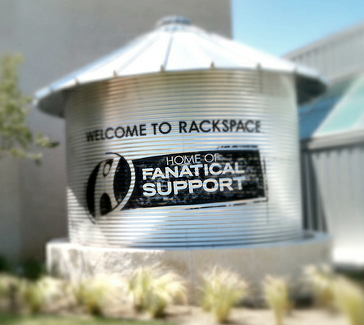
The drive towards digital means that change is not something that happens outside ‘business as usual’; change is now a permanent feature of day-to-day business operations. Cloud is the engine of digital transformation and a critical enablement factor for innovation, cost reduction and customer experience initiatives.
New research commissioned by Rackspace and conducted by Forrester, found that cloud advancements are the driving force behind most businesses’ digital strategy, with 81 percent of business leaders citing the migration of existing workloads into a public or private cloud environment as a critical or high priority business initiative.

But as a business generation, while we are getting faster at new technology adoption, we still seem to stumble when it comes to understanding the requirements (and limitations) of the business consuming it.
Introducing new cloud-based operating practices across an entire organisation is rarely straightforward, as with anything involving people, processes and their relationship with technology.
In fact, while 71 percent of business and IT decision makers reported their organisation is now more than two years into their public cloud journey, the survey highlighted a gap between the expectation and the reality of their migration projects.
While some of these challenges were recognised upfront, the scale and impact were far more significant than expected once organisations had begun migrating to and running production workloads in the cloud. Managing the gap between expectation and reality plays a huge role in programme success, so it’s imperative that organisations start with an accurate perspective on their maturity, capability and mindset.
Business and technology leaders need to work together to deliver successful migration programmes, focussing on strong communication and identification of the right resources and skills across the business plus the usual rigorous planning, building and testing. Key considerations include:
Align Business and IT Early On
One-third of respondents identified that a lack of alignment between business and technology was impacting their migration process. Additionally, 39 percent found the impact was further compounded due to an inflexible corporate culture and poor change management.
Prioritise Security and Compliance
Security, privacy, and compliance were organisations’ top concerns regarding their cloud infrastructure (76 percent and 51 percent). Losing operational control of data creates vulnerability to external security and privacy threats, while GDPR and other data management regulations have established greater penalties for the theft, misuse and abuse of customer data. It’s therefore no surprise that respondents cited specific security and privacy issues as a challenge both during (31 percent) and after (38 percent) migration to the cloud.
Maintain a Realistic View of Cost and Complexity
Many organisations are still under-forecasting the cost of cloud migration, with two-fifths (40 percent) describing them as higher than estimated. The biggest cost disparity was surrounding upgrading, rationalising and/or replacing legacy business apps and systems, with 60 percent of respondents identifying it as higher than expected.
When it comes to the practicalities of planning and executing the cloud journey, data issues (40%), workload management in the cloud (34%), and vision and strategy for the transformation (31%) are cited as the top 3 issues. And even post migration, problems do not disappear. Respondents highlighted a lack of adequate user training (44%), cultural resistance to cloud migration (37%), and inadequate change management programs (36%), as their biggest challenges.
Mind the [Skills] Gap
To architect, secure and manage cloud migration, organisations need specialist skills. However, 47 percent of organisations realised during a migration they lacked the requisite skills, increasing the time-to-value of their cloud programmes. An additional 27 percent identified the same issue on completion of the migration.
Partner for Success
One of the clear issues that organisations faced in minimising the aforementioned challenges was a lack of strategic vision. As a business generation, we are getting faster at adopting new technologies, but still seem to fall short on understanding the requirements (and limitations) of the business consuming it.
The essential reshaping of both the technical and cultural approach to IT services when migrating to the cloud is no mean feat for a business “going it alone”. It’s therefore little surprise that to improve organisational flexibility when it comes to cloud migration, business and IT leaders are increasingly leveraging outside help.
Cloud service providers can help across the board to establish digital strategies that assure a successful cloud migration. In fact, 78 percent of respondents reported that they rely upon service partners to help them run workloads in the cloud. And when asking respondents what they’ll do differently for future deployments, two-fifths of business and IT leaders said they would increase the assistance they get from advisory and consulting services.
The success of the programme relies on an accurate perspective of a business’s maturity, capability and mindset. Partnering with experts that have the experience in both identifying and managing these aspects will not only assure the success of cloud migration projects, but enable the realisation of overarching digital strategies.






